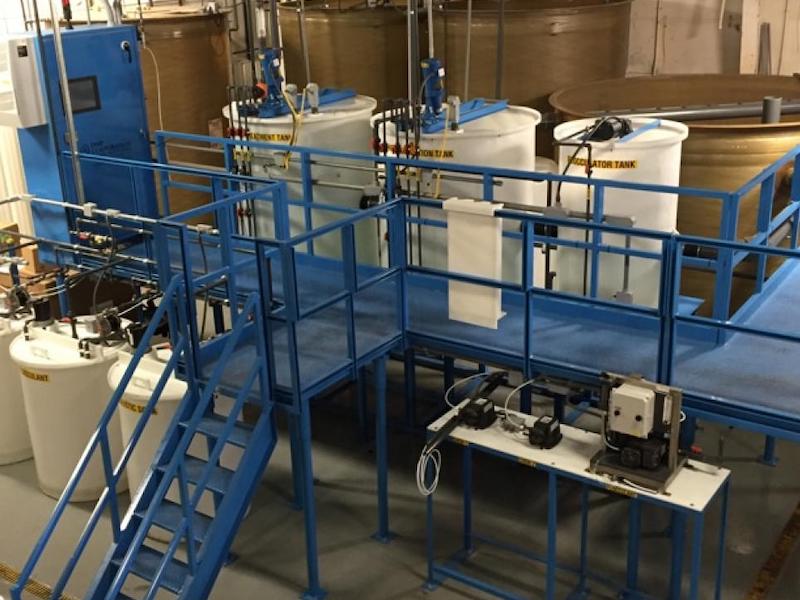It’s easy to imagine that the days of widespread use of cyanide, hexavalent chromium, and cadmium were a dark era in the history of surface finishing.
 Terry ClarkeBut in fact, many of these materials were relatively easy to use and waste treat, despite the obvious and well-known safety risks.
Terry ClarkeBut in fact, many of these materials were relatively easy to use and waste treat, despite the obvious and well-known safety risks.
Advances in modern electroplating processes have now resulted in some of the most technically advanced and commercially successful developments ever seen. These advances offer unequaled performance characteristics, including ultra-high corrosion resistance, uniform coating thickness, and excellent coating distribution. Coatings for both decorative and anti-corrosion applications have enabled OEMs to achieve new performance standards that were unthinkable 20 years ago.
These benefits are evident in terms of the long service life and reliability of everyday items like automobiles, electronics, and white household goods. Without these advances in surface finishing processes, our modern world could not function as it does, essentially without the need for continual repair and maintenance of everyday items.
However, many modern surface finishing processes do have drawbacks, the single biggest of which is that they are often much harder to waste and treat than their predecessors.
The Big Offenders
Let’s consider the most notable advances widely in use today. Zinc-nickel coatings used for corrosion protection and trivalent chromium coatings used in decorative applications are both highly advanced coating processes designed primarily to respond to the need for improved worker safety and higher coating performance standards.
They excel at achieving both goals; however, they also present some of the most difficult waste treatment challenges faced by users.
Zinc-Nickel Treatment
In the case of zinc-nickel processes, the process contains significant levels of complexing agents to enable nickel to remain soluble at pH normally well beyond the optimum range. Alkaline zinc-nickel is particularly challenging given this optimum solubility below pH10. Alkaline systems operate at a very high pH range and therefore need to adopt strong complexing agents to ensure the solubility of nickel ions. Whilst these complexants pose no issue for the production environment, they are very difficult to manage in the waste stream. Indeed, they are so challenging that many users opt to segregate their zinc-nickel waste and have it treated externally by experienced waste contractors. These contractors typically incinerate the waste rather than trying to treat it chemically.
If treated in-house by applicators, the conventional approach includes using sodium hypochlorite to partially destroy the complexing agents, rendering the nickel less soluble to allow further pH treatment forming nickel hydroxide sludge that can be filtered and pressed into a filter cake for landfill. Unfortunately, the method of using hypochlorite is rather slow and typically requires many hours of reaction time. Added to this, the hypochlorite reaction is slow, and as a result, this method can take 4-8 hours of treatment time and generate large volumes of waste sludge.
Acid zinc-nickel processes present very similar problems also due to similar complexor concentrations required to maintain nickel solubility. Just like the alkaline processes, external waste treatment is common, with hypochlorite treatment being used by some smaller applicators.
For larger zinc-nickel users, another option is to invest in on-site vacuum evaporation to minimize the volume of wastewater that is hauled off-site for treatment. This has the advantage of recycling a proportion of the zinc-nickel rinse water that is usually sent for treatment. However, with escalating costs of energy, the investment and operating costs for evaporation are increasingly beyond the scope of most applicators.
On The Horizon
There are several industrial and educational groups that have been established to try to solve this specific waste treatment issue.
In Europe, a small number of applicators have combined resources with a university to characterize the treatment problem and work on a solution. Work is at a very early stage, but no doubt they have their sights set on finding a viable approach.
Chemical Formulators Offer a New Focus
The best option, however, would be for the chemical formulators to develop alternative chemistry, with easier to destroy complexors. However, given the narrow chemical parameters within which zinc-nickel processes have to operate to optimize alloy composition and distribution, this is unlikely to yield much success. What’s needed is an approach that combines the chemical expertise of the formulators and chemical engineer skills of the waste treatment sector.
That’s exactly what prompted the formation of MacDermid Envio Solutions, the latest business unit at ESI. It combines the formulation expertise of MacDermid alongside the wastewater engineering skills of DMP, a waste treatment equipment specialist acquired by ESI in 2020. This new business, called MacDermid Envio Solutions, is currently working on industrial trials of an entirely new approach to the in-situ treatment of zinc-nickel waste. Their ‘patent applied’ for concept starts its industrial testing in June, with a full rollout expected in Q3 2022. Their global product manager Laurens Wessel presented the technology at the 2022 SUR/FIN exhibition being held in Chicago.
The new approach utilizes a modular array of small treatment cells, each designed to progressively neutralize zinc-nickel complexors. Both rinse water and decanted concentrates can be treated in the self-contained system before the waste stream is fed back into the applicators’ traditional chemical wastewater treatment system.
Laboratory testing has shown this approach to be 100% effective at liberating the complexed nickel and zinc, allowing the metals to be easily and completely removed by standard pH precipitation. The system will enable any size of applicator to use this approach and ensure any future production expansion could easily be retrofitted.
Trivalent Chromium
Trivalent Chromium electroplating processes have a similar issue to zinc-nickel. Complexed chromium is tightly bound within the process chemistry to ensure efficient deposition but makes waste treatment difficult. Unlike zinc-nickel, chromium ions are complexed in multiple forms, limiting the effectiveness of single chemical treatment during waste treatment.
Whilst some complexes respond to low pH treatment, others remain in solution. Conversely, other chromium complexes respond to higher pH treatment whilst others remain unaffected. Adjusting the pH through both high and ranges does not liberate all complexed chromium ions, which is why conventional treatments are often only partially effective.
A further complication is that trivalent chemistry from different suppliers can utilize a range of complexing agents, which further compromises chemical treatment.
Again, bringing together this chemical formulation knowledge along with wastewater treatment expertise at MacDermid Envio Solutions, a team in the U.S. is currently working on a new method for trivalent chromium waste treatment. Significant advances are being seen in treatment when chemical and equipment approaches are combined. This new system is scheduled to be tested later this year at several applicators in full-scale industrial production.
The Future of Waste Treatments for Surface Finishing
It’s clear that advances in surface finishing will continue to challenge the brightest researchers to improve the safety of chemical processes and drive the performance improvements that end users demand.
As the toolbox of environmentally acceptable chemicals continues to shrink, the use of more complex chemistry is certain to be the best route to achieve these goals. In turn, we need to keep pace with new waste treatment approaches to avoid increasingly costly off-site and energy-intensive wastewater treatment.
Finally, water used in surface finishing processing must be returned to the environment in a cleaner and more sustainable state, which is the goal of water providers in all parts of the U.S.
Terry Clarke is Managing Director of MacDermid Envio Solutions. Visit https://macdermidenvio.com



































